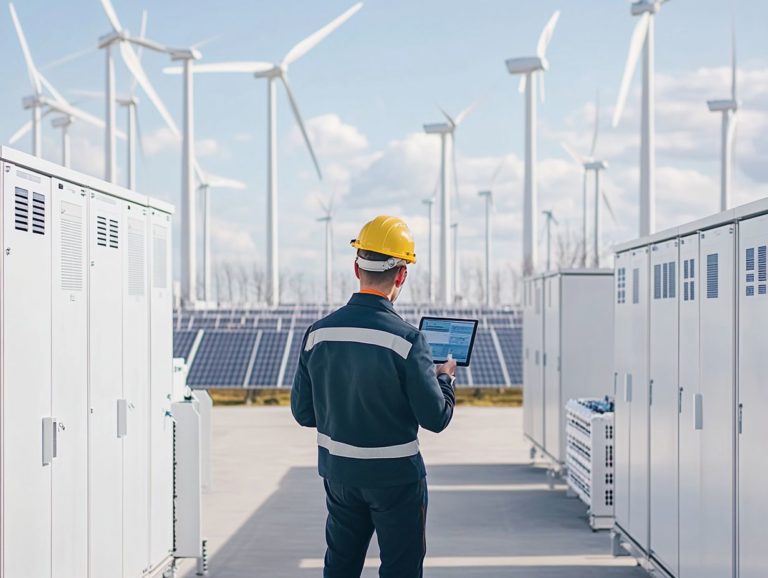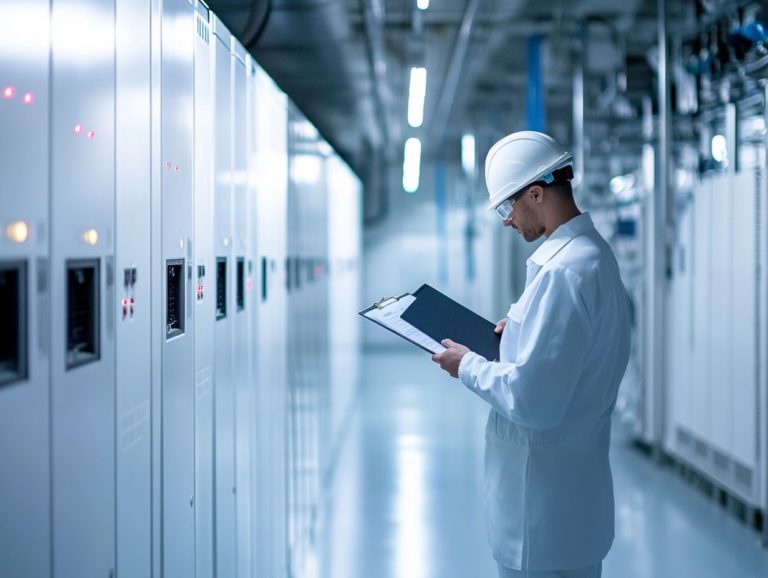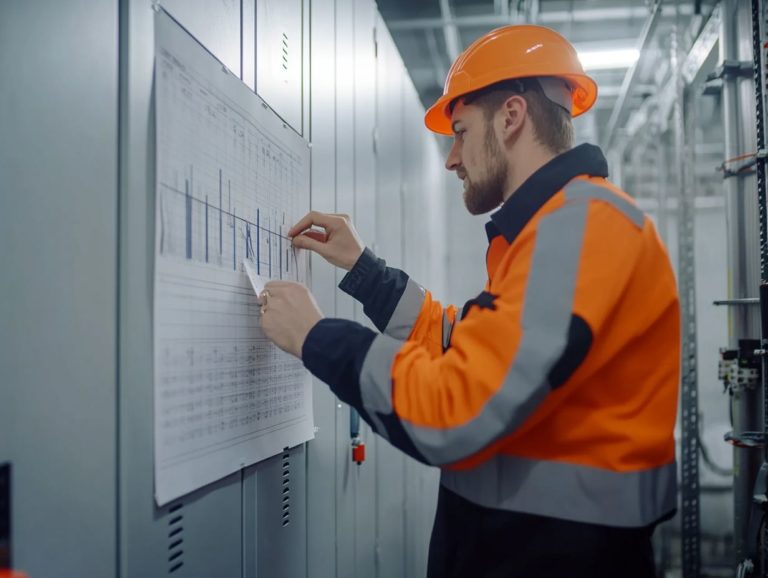The Role of Energy Storage in Disaster Preparedness
Disasters can strike at any moment, leaving communities vulnerable and unprepared. It’s essential for you to understand the risks and consequences of such events to ensure effective disaster preparedness.
This article delves into the critical role of energy storage in enhancing resilience during emergencies. You ll learn about the numerous benefits offered by various types of energy storage systems, which hold energy for later use, and how to seamlessly incorporate these technologies into your disaster response plans.
Real-life case studies will illuminate the impact of energy storage, providing you with valuable lessons for future preparedness strategies. Prepare to discover how proactive measures can truly make a difference when it matters most!
Contents
- Key Takeaways:
- The Importance of Disaster Preparedness
- The Role of Energy Storage in Disaster Preparedness
- How to Incorporate Energy Storage into Disaster Preparedness Plans
- Case Studies of Energy Storage in Disaster Preparedness
- Frequently Asked Questions
- What is the role of energy storage in disaster preparedness?
- How does energy storage help in disaster preparedness?
- What are the benefits of incorporating energy storage in disaster preparedness plans?
- Can energy storage systems be used for long-term disaster preparedness?
- Are there different types of energy storage systems for disaster preparedness?
- How can individuals and communities integrate energy storage in their disaster preparedness plans?
Key Takeaways:
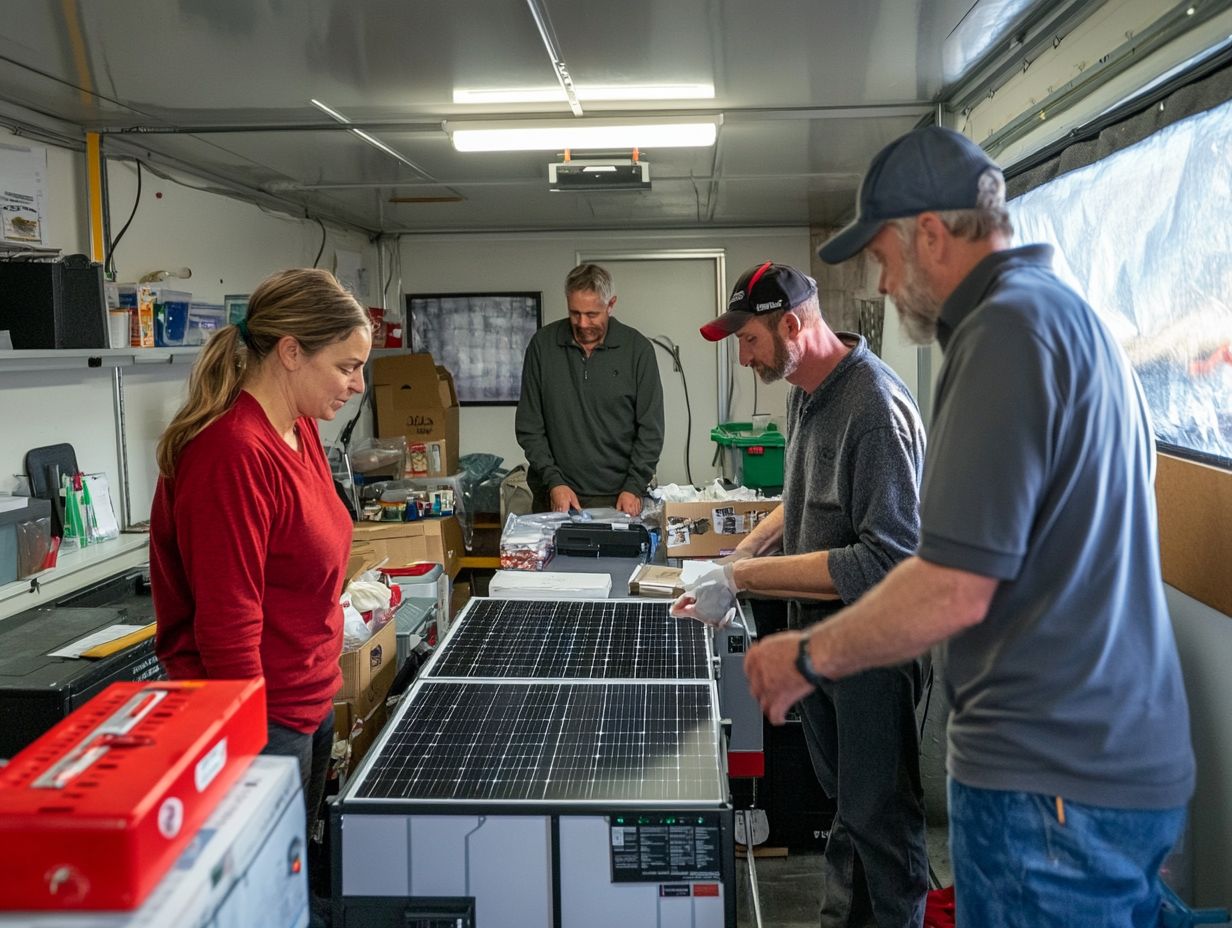
- Energy storage plays a crucial role in disaster preparedness by providing reliable backup power during emergency situations.
- Incorporating energy storage into disaster preparedness plans can help mitigate the risks and consequences of disasters.
- Considering factors such as type, capacity, and implementation is important when choosing and implementing energy storage for disaster preparedness.
The Importance of Disaster Preparedness
Disaster preparedness is essential for communities grappling with the rising threats of natural disasters like hurricanes, floods, and wildfires, especially in areas vulnerable to the impacts of climate change. The catastrophic aftermath of Hurricane Maria in Puerto Rico underscored the pressing need for effective disaster management strategies that go beyond immediate responses.
It’s about building long-term community resilience through sustainable solutions. By incorporating clean energy sources, such as solar energy, into your preparedness plans, you can bolster your emergency power capabilities. This approach not only ensures you’re better equipped to tackle future crises but also helps reduce your reliance on fossil fuels. Additionally, understanding the environmental benefits of energy storage can further enhance your sustainability efforts.
Understanding the Risks and Consequences
Understanding the risks and consequences of natural disasters is crucial for you to develop effective disaster preparedness and response strategies that address the needs of drought-prone regions.
These risks include a variety of physical dangers, such as injury or loss of life, along with economic setbacks that can severely impact local businesses and disrupt livelihoods. Disasters can lead to serious social issues, such as people losing their homes and communities breaking apart. By recognizing these multifaceted risks, you can help your community create robust emergency plans and enhance resilience against future challenges, including exploring the role of community energy storage solutions to support recovery efforts.
Focusing on preparedness not only minimizes immediate harm but also nurtures a stronger, more cohesive community, enabling everyone to bounce back swiftly in the wake of calamities. Additionally, exploring how energy storage can combat climate change can further enhance community resilience.
The Role of Energy Storage in Disaster Preparedness
Energy storage systems are essential for elevating disaster preparedness. They offer dependable backup power during emergencies, ensuring that important services continue to function seamlessly when conventional power sources falter.
Benefits of Energy Storage in Emergency Situations
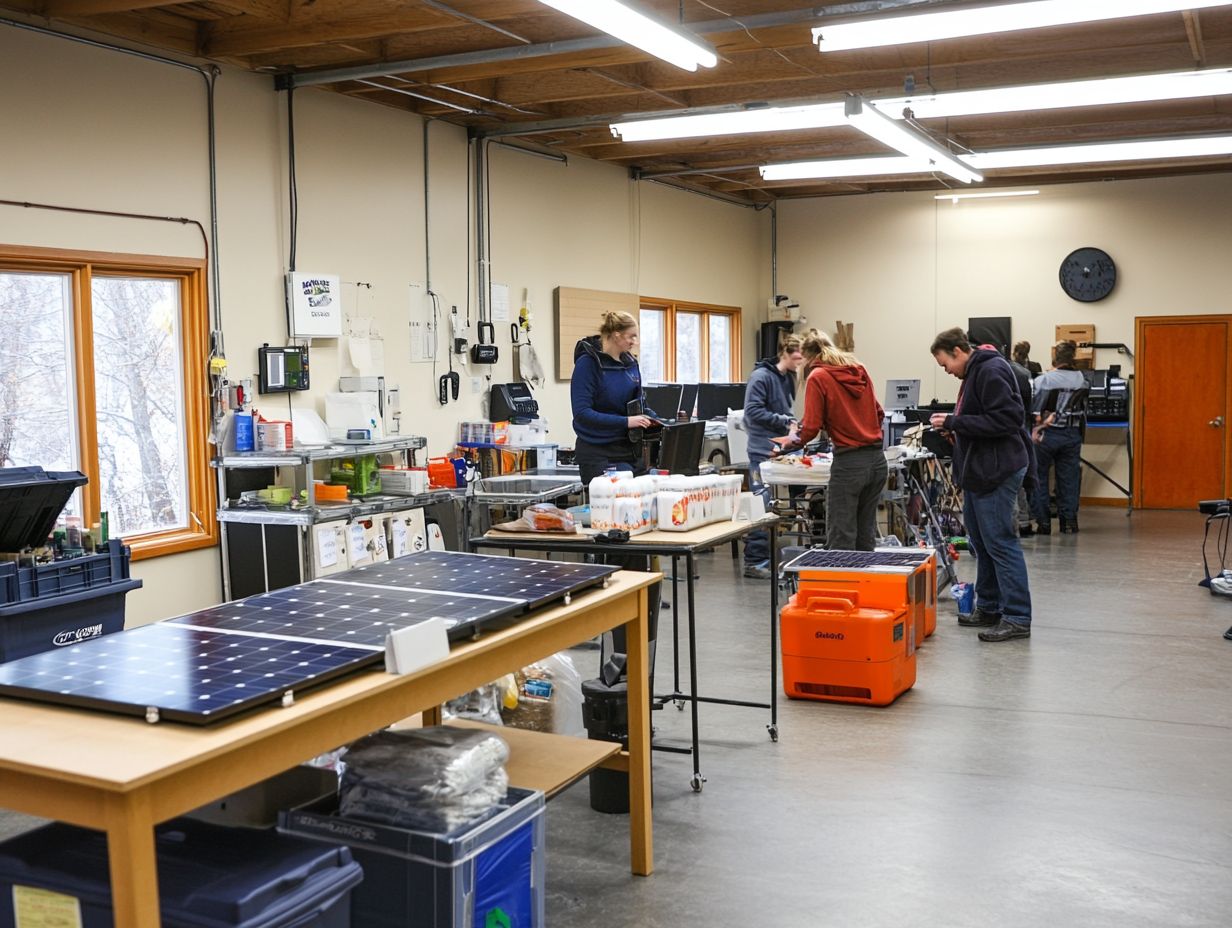
Energy storage offers amazing benefits during emergencies! It provides you with reliable backup power, enhanced access to clean energy through solar panels, and bolstered resilience in challenging times.
This technology is vital for supporting essential services, like hospitals and emergency shelters, ensuring they remain operational during power outages. Take California during wildfire season, for instance; energy storage systems have enabled medical facilities to maintain critical functions without missing a beat. Additionally, the role of renewable energy in disaster recovery has become increasingly important in these situations.
These solutions are not just about quick fixes; they contribute to sustainable energy use by storing excess energy from renewable sources such as solar and wind, as well as energy storage strategies that reduce reliance on fossil fuels.
This approach not only protects public safety during crises but also fosters long-term environmental benefits, making it a pivotal investment for communities looking to elevate their disaster preparedness.
Act now to ensure your community is ready! Start planning your energy storage solutions today to protect your community!
Types of Energy Storage Systems
You ll find a variety of energy storage systems at your disposal, including advanced battery systems, Eco-ESS, and solar-powered microgrids. These can integrate with clean energy solutions to enhance overall effectiveness in disaster preparedness.
When you weave these solutions into your emergency management strategies, you can secure a reliable power supply during critical situations. Advanced battery systems stand out with their high efficiency and rapid response times. They provide essential backup power during blackouts. To understand how energy storage is essential for smart homes, consider Eco-ESS, with its impressive scalability, allowing for tailored installations that grow in tandem with your community’s needs.
These systems blend seamlessly with renewable energy sources like wind and solar, making them a smart choice for a sustainable future. Understanding the importance of energy storage for solar homes is vital, as solar-powered microgrids serve as decentralized energy hubs, enhancing resilience and minimizing the risk of widespread outages. Each of these innovations showcases significant potential to strengthen your disaster readiness.
How to Incorporate Energy Storage into Disaster Preparedness Plans
Incorporating energy storage into your disaster preparedness plans demands thoughtful consideration of multiple factors. This careful planning is essential to ensure effective implementation and to fully leverage the advantages that smart grid technology technology that efficiently manages electricity use can offer.
Considerations for Choosing and Implementing Energy Storage
When you choose and implement energy storage systems, several critical considerations must be addressed to ensure effectiveness and bolster community resilience. These include cost-effectiveness and how well the technology works with what you already have.
First and foremost, evaluating the cost-effectiveness of various solutions is paramount. This directly influences your budget allocation and potential return on investment. Additionally, understanding energy storage for home backup power can help you meet the capacity requirements to align with the energy demands of your community.
Scalability is another vital factor, allowing for growth and adaptation as energy needs evolve over time. Don’t overlook how well the technology works with what you already have with your existing infrastructure, as this will help streamline integration and minimize disruption. Additionally, understanding the challenges of implementing energy storage can further enhance your planning process.
Engaging the community throughout this process is key. Fostering trust and transparency ensures stakeholders feel heard, and their specific needs are prioritized. For instance, understanding energy storage technologies for homes ultimately leads to a more successful implementation.
Case Studies of Energy Storage in Disaster Preparedness

Exploring case studies of energy storage in disaster preparedness offers you invaluable insights into effective strategies, best practices, and lessons drawn from real-world applications. This is especially true regarding solar-powered microgrids and their role in disaster management.
These examples illuminate the potential of energy storage solutions and equip you with the knowledge needed to navigate challenges and implement successful initiatives.
Real-Life Examples and Lessons Learned
Real-life examples of energy storage applications in disaster preparedness underscore the vital role these systems play in bolstering community resilience, particularly after events like Hurricane Maria.
Post-hurricane analyses have shown that neighborhoods outfitted with energy storage solutions sustained power for essential services. This includes hospitals and emergency shelters, significantly shortening recovery times for impacted communities.
In Puerto Rico, solar-powered storage units enabled a quicker restoration of communication systems. This allowed residents to reconnect with emergency services.
These experiences highlight the importance of integrating energy storage into disaster response strategies. They illustrate not only the immediate benefits during crises but also the long-term preparedness that these systems provide. This ultimately shapes future implementations in similarly vulnerable areas.
Frequently Asked Questions
What is the role of energy storage in disaster preparedness?
Energy storage plays a crucial role in disaster preparedness by providing a reliable backup source of power during emergencies!
How does energy storage help in disaster preparedness?
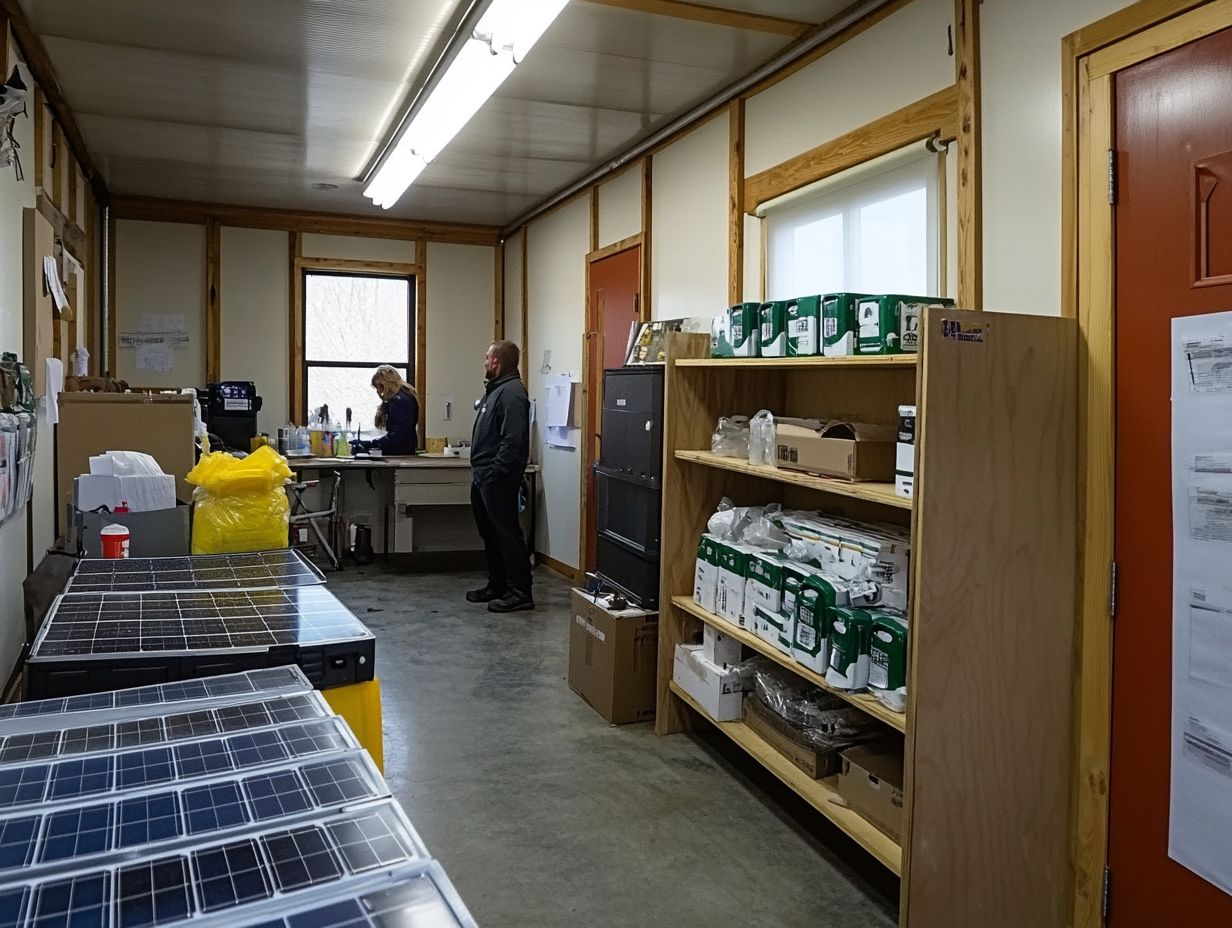
Energy storage systems save extra energy from renewable sources. This energy can power homes during outages caused by disasters.
What are the benefits of incorporating energy storage in disaster preparedness plans?
Energy storage ensures steady power during disasters. This reduces dependence on traditional power grids.
Can energy storage systems be used for long-term disaster preparedness?
Absolutely! Energy storage systems provide a reliable backup power source when charged with renewable energy.
Are there different types of energy storage systems for disaster preparedness?
Yes, different energy storage systems include batteries, flywheels, and pumped hydro storage. Each serves a vital role in preparing for disasters.
How can individuals and communities integrate energy storage in their disaster preparedness plans?
Individuals and communities can use battery systems and solar-powered microgrids. Investing in these systems and promoting renewable energy can enhance disaster preparedness.

